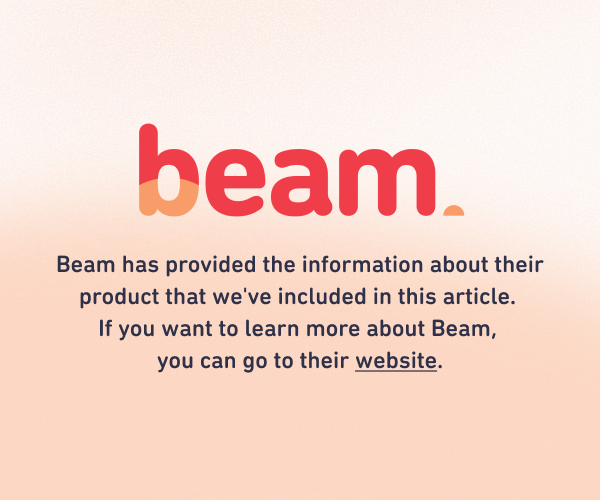Under the proposed Payday Super legislation from 1 July 2026, employers will need to ensure that super contributions are received by their employees’ superannuation fund within 7 calendar days of payday, rather than the current quarterly obligation. This is a major legislative shift designed to help employees grow their super balances faster, increase transparency, and reduce non-compliance.
But while the change sounds simple, it comes with some big implications for payroll timing, cash flow, reconciliation, and data accuracy. Fortunately, Microkeeper is partnered with Beam, our integrated super clearing house, to help employers prepare ahead of time and avoid disruption.

This guide breaks down:
- What will change for employers.
- Hidden workflow impacts you might not expect.
- How Microkeeper is updating its systems.
- How Beam is preparing behind the scenes.
- What you can do now to get ahead.
What’s changing for employers
Under the new Payday Super requirements:
- Super must be paid at the same frequency as wages (e.g. weekly, fortnightly, monthly).
- Super contributions must be received by the super fund within 7 calendar days of wage payment (Treasury Payday Super factsheet).
- Accurate employee and fund data becomes increasingly important to avoid delays or penalties.
- The Super Guarantee Charge (SGC) calculation will change and include components such as the outstanding SG shortfall, notional earnings and an administrative uplift amount (Payday Super factsheet).
Here’s a quick comparison:
Workflow impacts: What employers might not expect
Payday Super doesn’t just change how often you submit, it changes how fast and how accurately you need to operate:
- Tighter pay run timing: pay runs and super must now happen together.
- Reconciliation per cycle: you’ll need to reconcile super every pay run, not every 3 months.
- Fewer second chances: if your data is wrong, there’s less time to fix it before funds reject the payment.
Why accurate data will be the key to Payday Super
Timing and compliance risk
According to the proposed legislation:
- Super is considered “paid” when accepted by the fund, not just submitted to the clearing house.
- This must occur within 7 calendar days of paying wages.
That means:
- Delays caused by incorrect data can lead to penalties if it is not received by the super fund on time.
- Employers need streamlined processes and validated data to avoid failures.
Super Fund readiness
Super funds currently have up to 20 days to match and allocate contributions if issues arise. Under Payday Super, they’ll have only 3 business days to allocate or return the contribution.
This will:
- Increase pressure on funds to process faster.
- Likely result in more payments being returned if data isn’t perfect.
- Require employers to be much more precise with employee fund info.
“Shorter processing times could lead to increases in rejected payments. This is where upfront data validation will be essential.” - Mathew Gilroy, Founder of Beam
While the need to get data right will be more important than ever under Payday Super, our partnership with Beam will help make this easier for employers using Microkeeper. Beam has an existing upfront data validation feature, that means errors can be identified and corrected before payments are made to help reduce the delays that may cause issues once Payday Super begins.
How Microkeeper is preparing
Microkeeper's automated payroll system is actively updating its payroll workflows to support:
- Seamless per-pay-cycle super batching.
- Clear reconciliation tools aligned with shorter payment cycles.
- Improved alerts and validation to flag missing or incorrect data before submission.
- Configurable settings so businesses can choose when and how they want to adopt payday processing ahead of the mandate.
We’ll also be publishing guides, checklists, and in-platform prompts throughout FY25-26 to support you through this transition. You can find our latest guides here.
How Beam is preparing: Behind the scenes of Super processing
Beam’s super payment technology already supports daily super payments, meaning employers using Microkeeper + Beam could start simulating Payday Super right now if they choose.
But the team at Beam know it’s not just about payment frequency. Payday Super is an opportunity to improve and streamline the entire super payment process. Here’s how they’re getting started:
Clearing House readiness
- Exploring real-time payment options that are fast and secure.
- Auditing data validation systems to reduce the chance of errors.
- Improving exception handling notifications so employers know what to fix, faster.
- Investigating ways to integrate fund onboarding directly into existing flows.
“We’re not just preparing for more frequent payments, we’re looking at how the entire super experience can be smoother and smarter”. - Mathew Gilroy, Founder of Beam
Early preparation advice
Beam recommends:
- Employers can consider simulating and aligning to Payday Super now, while quarterly payments are still accepted, as a safer way to test your setup.
- Clean up and validate employee fund and TFN data.
Choose payroll software (like Microkeeper) that integrates directly with a super clearing house.
“Employers can be confident that we’re deeply invested in not only delivering solutions but also actively educating on what’s changing and being a supportive partner for them as we all transition to this new way of paying super.” - Mathew Gilroy, Founder of Beam
How to prepare now
Here are a few things you can start doing today:
- Audit employee super fund details and update where needed.
- Rehearse a per-pay-cycle super workflow inside Microkeeper.
- Educate your finance and payroll teams about the upcoming timeline.
- Stay subscribed to Microkeeper updates for Payday Super rollout info.
Payday Super is one of the biggest changes to employer super obligations in decades. While the compliance burden is increasing, Microkeeper and Beam are working together to build tools that make the transition as smooth as possible.
Start early. Test your processes. And lean on your providers, we’re here to support you every step of the way.
For more info, reach out to Microkeeper Support or check out Beam’s Payday Super resources on their website.
The information about Beam in this article has been provided by Precision (ABN 47 098 977 667, AFSL 246 604), the Issuer of Beam. Microkeeper does not provide advice or a recommendation in relation to Beam or any other clearing house product. The opinions and comments shared by people in this article are theirs alone, and they’re not necessarily shared by Precision. It uses information that’s accurate at the time of publishing.
Precision is wholly owned by Australian Retirement Trust Pty Ltd (ABN 88 010 720 840, AFSL 228 975), trustee of Australian Retirement Trust (ABN 60 905 115 063). The information about Beam is general information only. It’s not based on the specific objectives, financial situation or needs of your business. So think about those things and read the Product Disclosure Statement (PDS) before you make any decision about Beam products. For a copy of the Beam Clearing House PDS, contact Microkeeper or visit their website.









